7 reasons why an offline/physical fitness class is better than the online one
Whether it's a livestream yoga class or a prerecorded HIIT session, virtual workouts seem to be all the rage. There's no denying their convenience and accessibility, but are they really the best choice for everyone?

Source: Unsplash
Have you noticed how the fitness world has taken a digital turn recently? Everywhere you look, there's a new online workout popping up. Whether it's a livestream yoga class or a prerecorded high-intensity interval training (HIIT) session, virtual workouts seem to be all the rage. There's no denying their convenience and accessibility, but are they really the best choice for everyone?
They have their place, and they've been a lifesaver for many of us during tough times. But let's take a moment to appreciate the good old, traditional, offline fitness classes. Remember the energy in the room, the camaraderie, the sweat-drenched high-fives after a tough workout? There's something about that physical space that a digital platform just can't replicate.
Over the next few sections, We'll be diving into why I think an offline fitness class might be a better fit for some of us. We'll explore everything from real-time feedback and social interaction to the access to a full range of gym equipment. So, lace up your sneakers, fill up your water bottle, and let's hit the ground running!

Source: Pexels
1. Personal interaction and socialization
Remember the last time you walked into a physical fitness class? The smiles, the friendly chit-chat, and the sense of belonging? There's an undeniable buzz in the air.
The feeling of being a part of a community, a 'fitness family' if you will, is something special. It can make the difference between dreading your workouts and genuinely looking forward to them. You might even find your new best friend or a workout buddy who motivates you to push past your limits.
Now, contrast that with working out alone at home, staring at a screen. Sure, there are online fitness communities. Yes, you can send emojis, comments, or virtual high-fives. But let's be honest, it's just not the same, is it?
The face-to-face interaction, the instant camaraderie, the shared laughter, or the combined groans when the instructor announces burpees - these moments create a magical, motivational forcefield that online classes struggle to replicate.
And then there's the power of the group effect. There's something incredibly motivating about a room full of people moving in sync, pushing their limits, and working towards their goals. You're not just working out; you're sharing an experience. You're part of a collective effort, a shared journey. It's a psychological boost that can help you to stick with your fitness plan and achieve your goals faster.

Source: Pexels
2. Real-time corrections and feedback
Moving on to our next point, let's talk about the beauty of real-time corrections and feedback. Have you ever tried to do a new exercise by watching a video and then wondered, "Am I doing this right?" I bet we've all been there. The truth is, when it comes to fitness, the details matter. It's not just about doing the exercises but doing them right.
In a physical fitness class, there's always a trainer around to guide you. They keep a close eye on your form, ensuring you're not only getting the most out of your workout but also reducing the risk of injury.
They're there in real-time to correct you if your back isn't straight during planks, or if your knees are over your toes during squats. It's like having your own personal bodyguard, protecting you from the potential pitfalls of improper form.
But what about online classes? Even with the best trainers and the most detailed instructions, the lack of personalised real-time feedback is a major drawback. It's a one-way street. You can see the trainer, but they can't see you. And so, the onus falls on you to self-correct, which isn't easy, especially for beginners. And while some online platforms may offer two-way interactions, these are often limited by screen size and image quality, not to mention the awkwardness of adjusting your camera angle mid-workout!
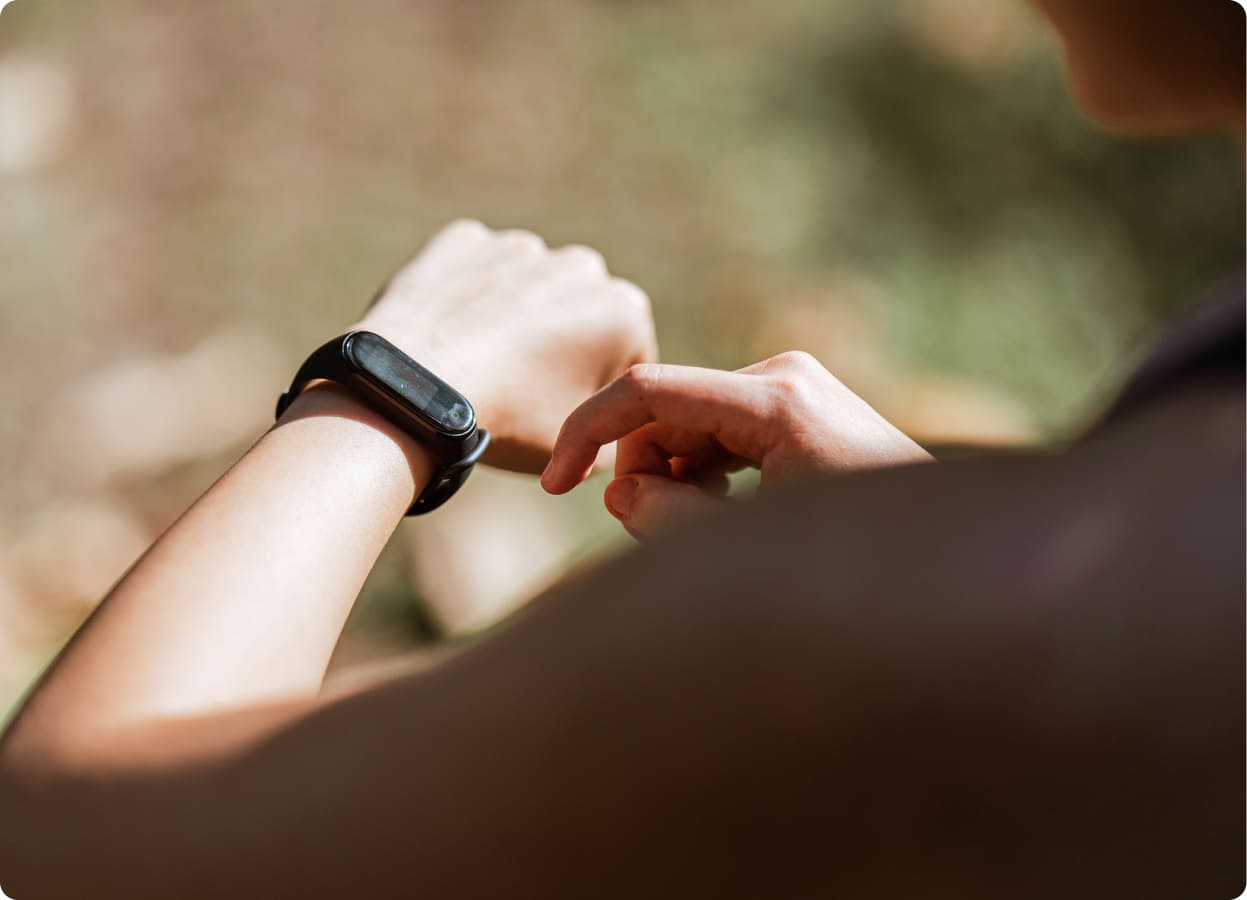
Source: Pexels
3. Structure and routine
Now, let's talk about the importance of structure and routine in our fitness journey. Who hasn't thought, "I'll just do my workout later," when an online class was scheduled, only to find that 'later' never came? It happens to the best of us. Without a set structure, it's easy to push fitness to the bottom of our to-do list.
Physical fitness classes, on the other hand, give us a set schedule. You know your spin class is at 6 PM every Tuesday and Thursday, so you plan your day accordingly. There's less room for "I'll do it later" because, well, you can't. The class won't wait for you.
It's like having a date with your fitness. Would you stand up a friend who's waiting for you at a coffee shop? Probably not. Then why do it to your fitness class, right? This kind of structure keeps us accountable and helps build a routine, a critical aspect of any successful fitness journey.
But with online classes, there's often too much flexibility. The option to workout 'whenever' can lead to procrastination. With Netflix, your comfy couch, and a bag of chips competing for your time (and let's not forget unexpected work emails or family chores), it's too easy to postpone that online class. Before you know it, it's bedtime, and another day has passed without a workout.
In a nutshell, while the flexibility of online classes sounds great, it often results in inconsistency. If you're someone who needs a little nudge (or a big push) to stick to your workout routine, a physical fitness class is your best bet. It gives you the structure you need to stay on track and make fitness a non-negotiable part of your day.
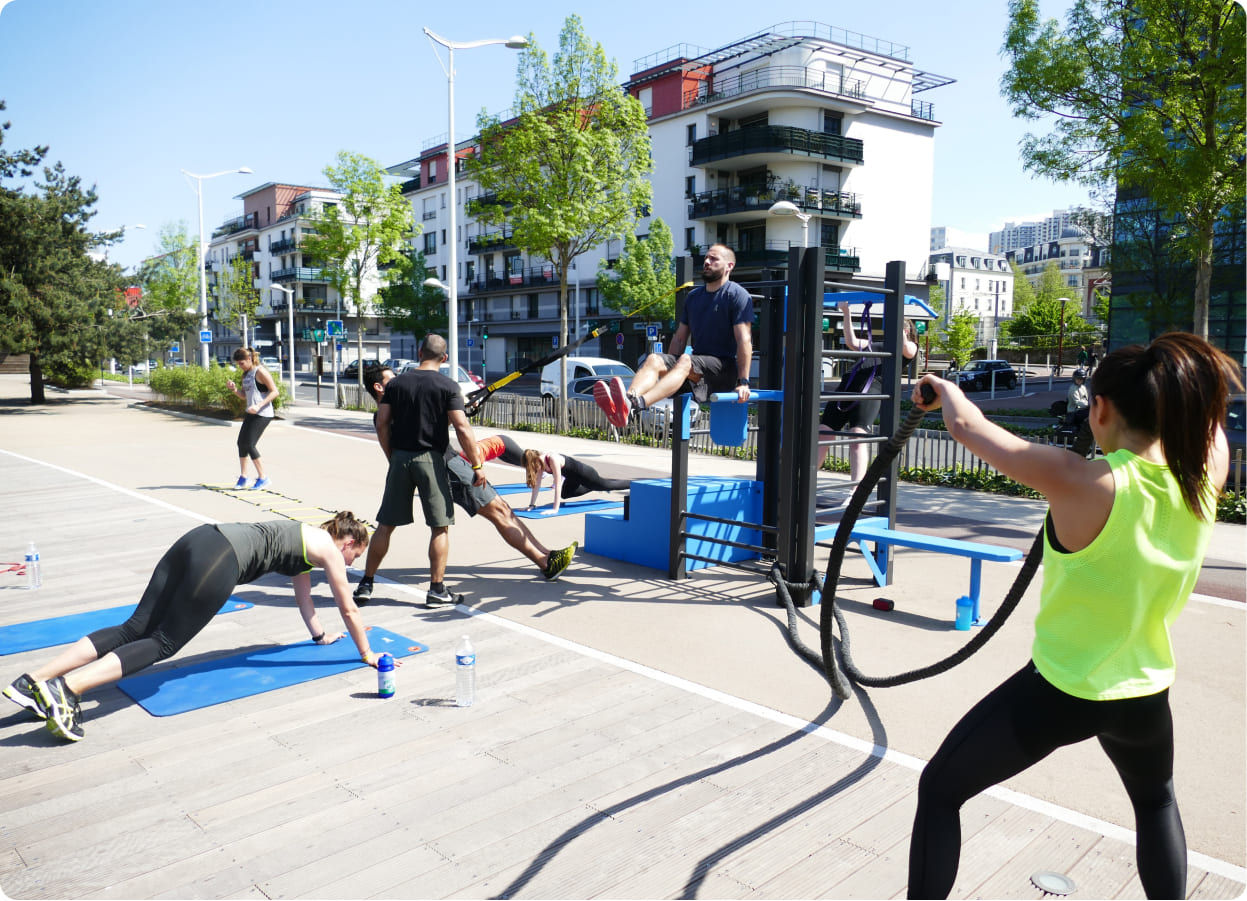
Source: Unsplash
4. Access to equipment and facilities
Have you ever looked at a home workout video and thought, "Well, that would be nice, if only I had a rowing machine, a full set of dumbbells, and a ballet barre in my living room"?
The fact is, offline fitness classes usually take place in fully equipped gyms or studios. You've got everything from treadmills and ellipticals to squat racks and Pilates reformers. There's equipment for strength training, cardio, functional training, and more. It's like a fitness playground waiting for you to explore and push your boundaries.
And let's not forget the facilities. Proper changing rooms, showers, sometimes even a sauna or a steam room. Some places even have a nutrition bar where you can grab a protein shake or a healthy snack post-workout. It's a complete fitness package.
Now, consider the typical setting for an online class. It's usually your living room, bedroom, or if you're lucky, a small home gym. The limited space often means you're restricted to bodyweight exercises or minimal equipment. While there's a lot you can do with bodyweight exercises, having access to a full range of equipment definitely broadens your fitness horizon and can make your workouts more effective and fun.
So, when it comes to the variety and quality of equipment and facilities, offline classes have an edge over online ones. It might not be a deal-breaker for everyone, but for those who enjoy the thrill of a heavy lift or the rush of a sprint on a treadmill, a physical fitness class is the way to go.
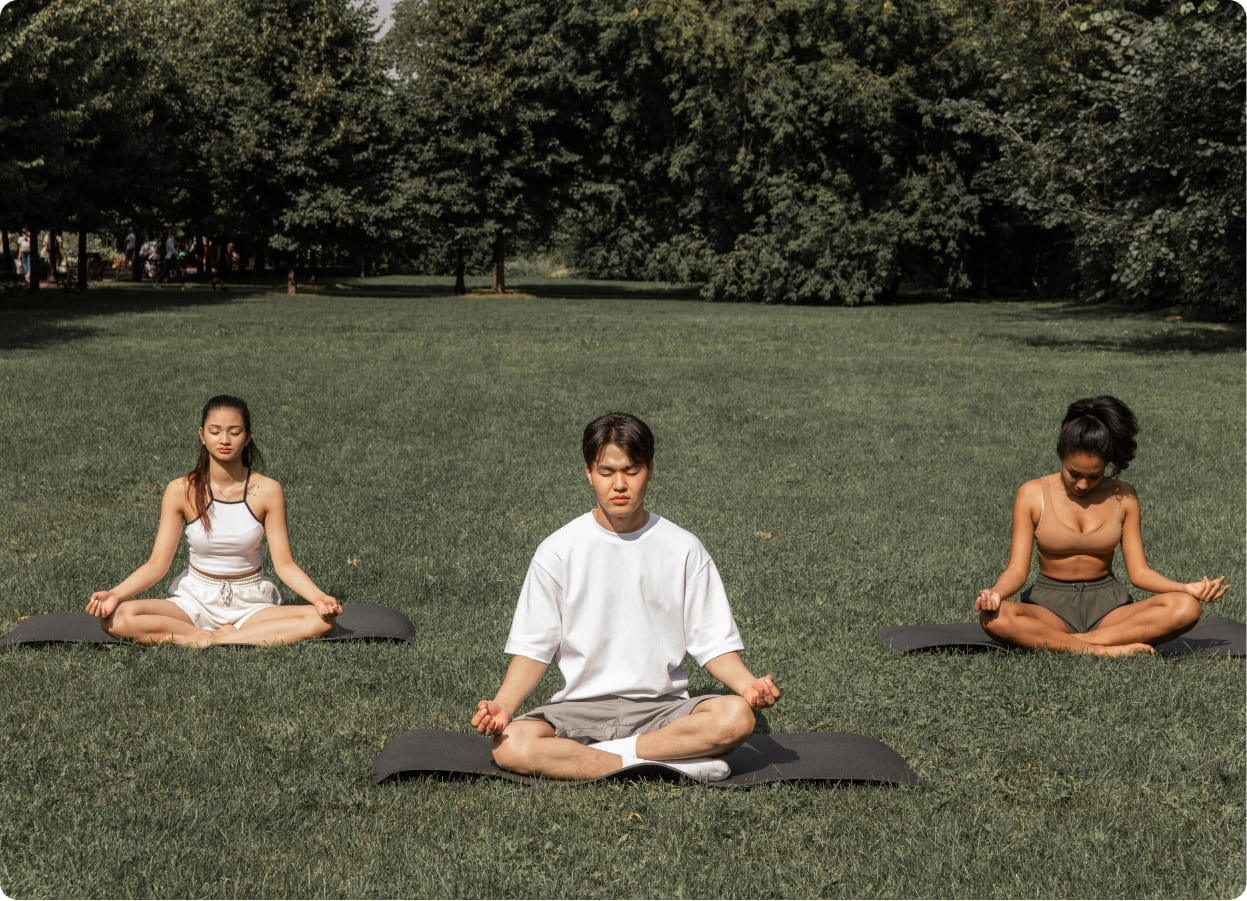
Source: Pexels
5. Reduced distractions
And now, let's turn our attention to something we all face when we're trying to work out at home – distractions. Who among us hasn't had a workout interrupted by a doorbell, a pet demanding attention, a child needing help with homework, or the tempting sight of a comfortable couch? In the comfort of our own homes, distractions are everywhere.
When you're at a physical fitness class, it's just you and the workout. You're in a dedicated space with a single purpose: to focus on your fitness. It's like entering a distraction-free zone where all the daily life chaos is left at the door. There's no TV to tempt you, no interruptions. Just pure, unadulterated focus on your workout.
Now think about your last online class. Did you pause the workout to answer a quick email? Or maybe you stopped midway because your favourite show was about to start. Or perhaps you just didn't push yourself as hard because, well, who's watching, right? At home, the lines between workout time and everything else can blur, often leading to less than stellar workouts.
So, while working out in your living room may seem convenient, the myriad of distractions can detract from the quality and intensity of your workout. In a physical fitness class, on the other hand, you get a set amount of dedicated, uninterrupted time to focus solely on yourself and your fitness goals. And let's be honest, in our busy lives, we could all use more of that!
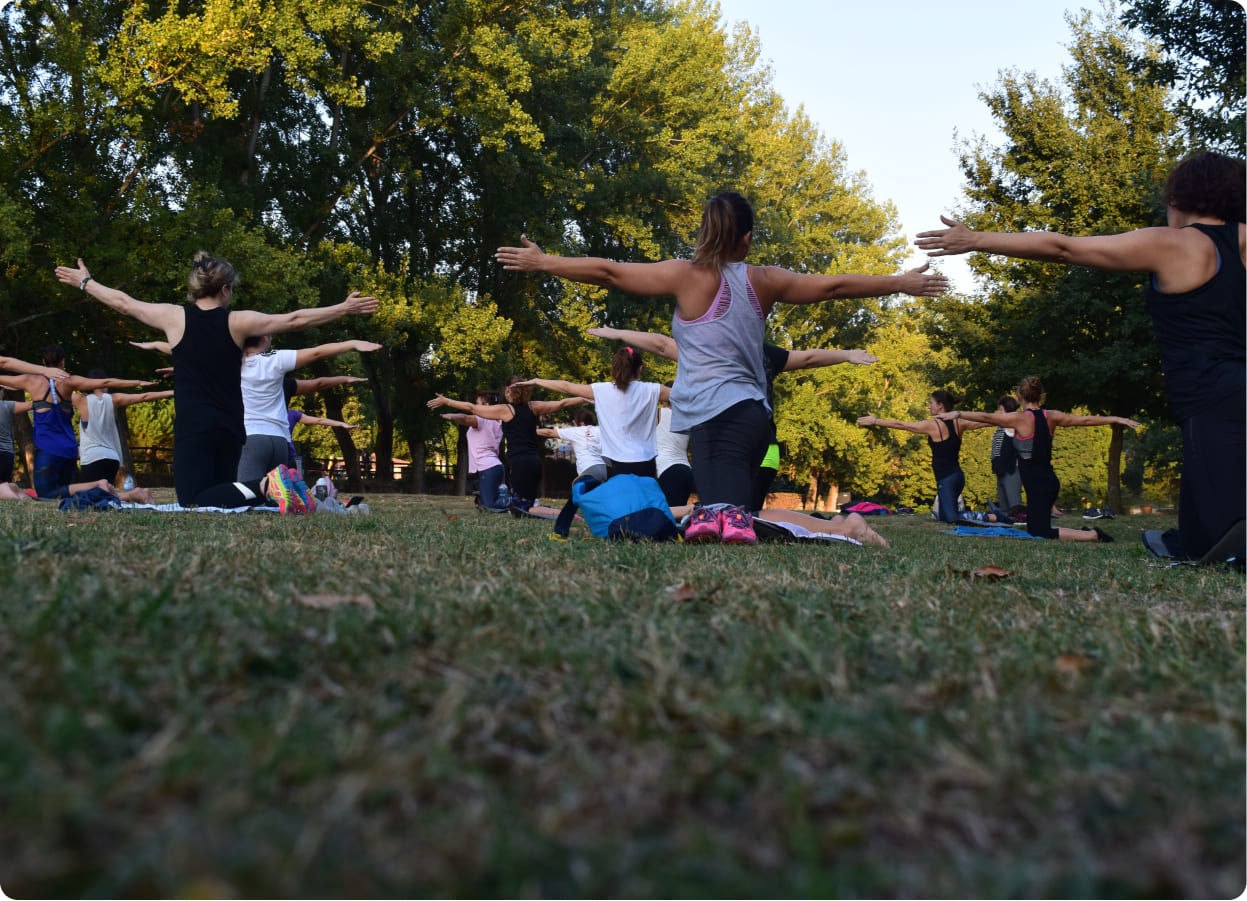
Source: Pexels
6. Physical environment and atmosphere
You know that pumped-up feeling you get when you step into a fitness class with high-energy music blasting, everyone in matching workout gear, and an instructor who's bursting with enthusiasm? That's the magic of the physical environment.
There's a certain energy, a palpable buzz that fills a physical fitness class. It's in the way the music echoes off the walls, the collective focus of everyone in the room, and the inspiring sight of others pushing their limits. It's an atmosphere that screams 'let's do this,' pushing you to go harder, lift heavier, and move faster.
This kind of environment can be incredibly motivating. It can make the difference between a mediocre workout and an epic one. It's a space designed for one purpose: to make you work and sweat. From the lighting to the floor layout, every detail is optimised to enhance your workout experience.
Now, compare this with working out at home in front of a screen. The atmosphere is simply not the same. You might be in your pyjamas, there may be distractions around you, and the motivation levels can wane. You can certainly try to recreate a fitness-friendly atmosphere at home, but let's face it - it's not easy, and it's definitely not the same.
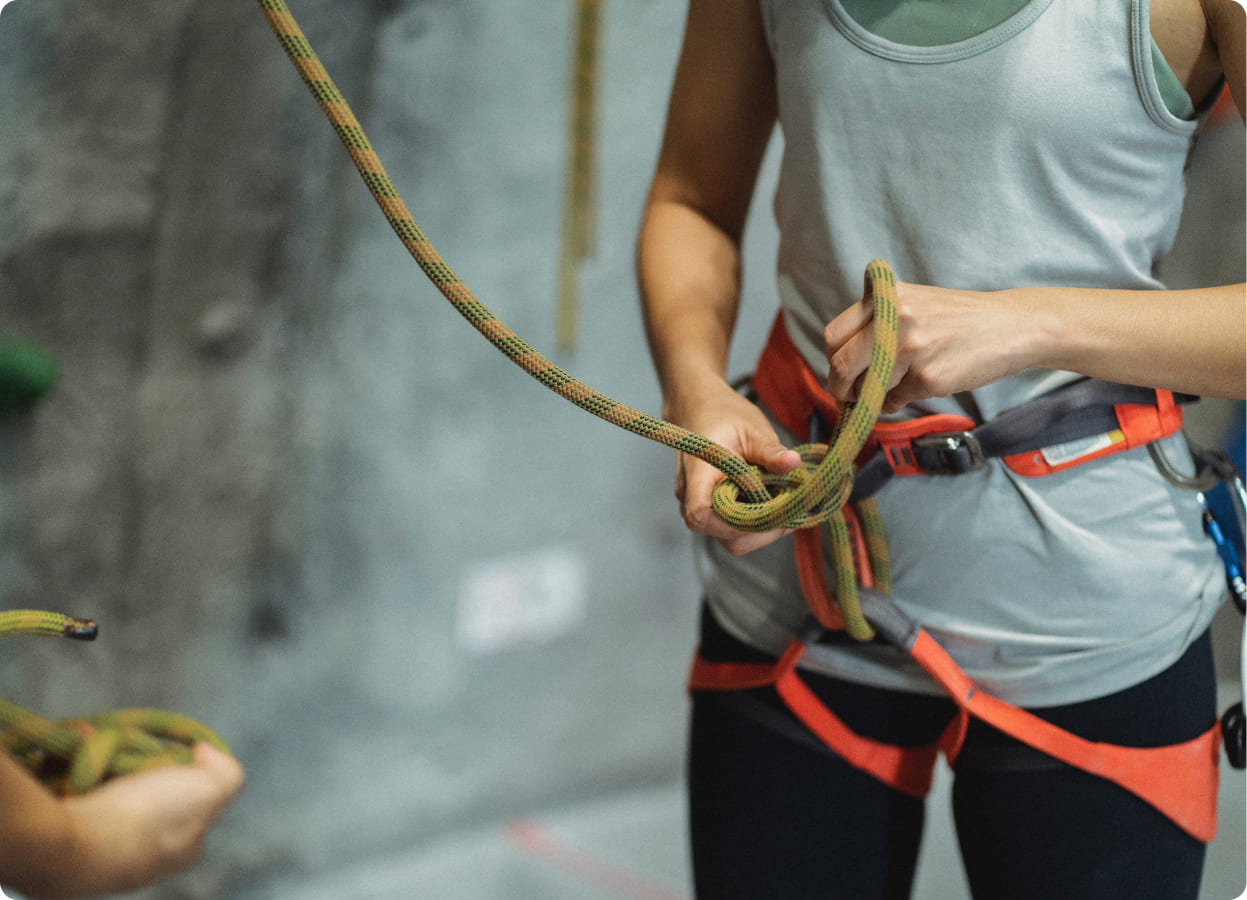
Source: Pexels
7. Safety and injury prevention
In a physical fitness class, there's always a qualified instructor keeping an eagle's eye on everyone. They're not just there to guide you through the workout; they're also there to ensure you're doing it safely. Whether you're a newbie figuring out how to do a deadlift or a seasoned athlete trying a complex move, having an expert around to monitor your form and technique is invaluable.
They can instantly correct your posture, adjust your movements, and offer modifications to suit your fitness level. It's like having a personal safety net, preventing you from making common mistakes that could potentially lead to injuries.
But when you're sweating it out alone with an online class, it's a different ball game. There's nobody to tell you if you're doing an exercise wrong or if you're pushing yourself too hard. Even with the most explicit instructions and demonstrations, the risk of misunderstanding and improper execution is real. And that can lead to strain, sprains, or even severe injuries.
While we all love the convenience of working out at home, it's important to recognize the safety aspect that comes with a physical class. Having a trained professional around to guide you, correct you, and ensure you're not pushing beyond safe limits is a big plus. So when it comes to safety and injury prevention, offline classes definitely score higher.
Conclusion
So, there you have it! These are just a few reasons why an offline, physical fitness class might have an edge over its online counterpart. But we’re not saying online fitness classes are bad or ineffective.
Far from it. They offer great flexibility, allow you to try different types of workouts from the comfort of your home, and have been a lifesaver during lockdowns. In fact, for those looking to blend the best of both worlds, it’s worth exploring options that combine online convenience with the structure of physical classes.
Before making a final decision on your fitness journey, it’s crucial to do thorough research. If you're considering physical classes, don't forget to check out reviews and ask for recommendations. Once you find the right fit, managing your schedule and tracking your progress becomes the next important step. That’s where a robust fitness software can be a game changer.
That's why we highly recommend fitness class that uses a fitness management software like Rezeve.
It’s not just about finding and attending classes, but also about efficiently managing your fitness journey. Rezeve simplifies this by allowing you to manage your class schedules, track your progress, and maintain seamless communication with your instructors.
But it's also important to acknowledge the unique benefits that a physical fitness class brings to the table, especially in vibrant locales like Singapore. Exploring local workout classes in Singapore can offer irreplaceable community and motivation.
At the end of the day, fitness is a personal journey. It's about finding what works best for you, what motivates you to move, and what helps you stick to your goals. Whether it's the camaraderie of a physical class, the convenience of an online workout, or a mix of both, the most important thing is to stay active, keep moving, and have fun along the way. After all, the best workout is the one you enjoy and stick with!
Cheers,
Friska 🐨
Do you want to see more content like this? Follow us on Instagram and Facebook for more wellness advice, fitness trends, workout inspiration, and even best health and fitness deals exclusive to our followers. Don’t miss out!
.jpg)
